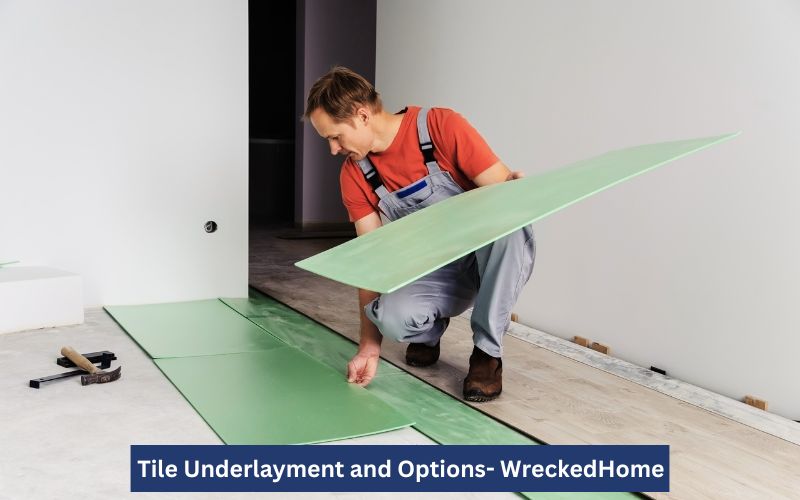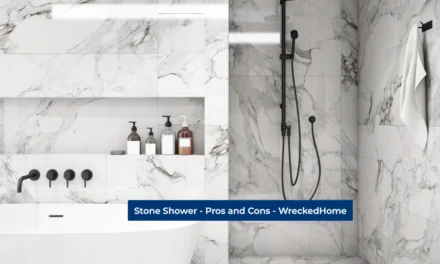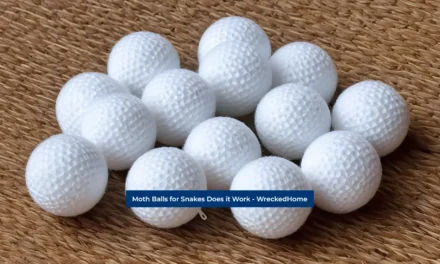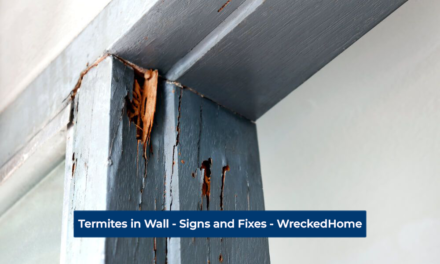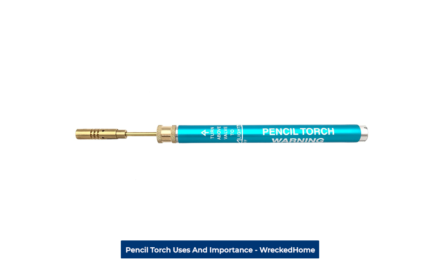If you want to remodel your bathroom or house floor, you may want to go for a tile floor. This is because this floor is durable, shiny, and pretty easy to install. We have seen a lot of people who are eager to install tiles in their homes on their own. Because it seems to be a DIY-type project. But, they neglect an essential aspect of the tile floor.
And that aspect is “Tile Underlayment”. A lot of people don’t know about this. So, they make a lot of mistakes while laying a tile floor in their house. So, our expert team decided to share the knowledge of tile underlayment and its different options with you.
What is Tile Underlayment?
There are actually three parts of a tile floor:
- A subfloor
- Tile underlayment
- Tile floor
The subfloor is an uneven base of your floor. If you install the tiles directly on it, the uneven spots will make it difficult for you to walk on the floor. Moreover, it will also crack your tiles.
So, to avoid these types of situations, a tile underlayment is used. It evens the subfloor so that your tile floor remains even and lasts longer.
Different Purposes of Tile Underlayment
It has different usages and purposes while installing tile floors. A few of them are:
- Tile underlayment ensures that moisture and humidity don’t impact your tile floor. It also avoids mold growth which is health hazardous and can have a bad odor.
- It provides an even and smooth surface to the tile floor, avoiding unevenness and lippage.
- It also provides soundproofing.
- It provides rigidity to the tile floor.
- It also helps the tile floor in supporting the load.
There are different types of tile underlayment options that have different purposes and are suitable for different types of tiles.
Different Tile Underlayment Options
There are three main categories of tile underlayment options:
- Sheet-type
- Liquid or semi-liquid options that need a roller or troller
- Membranes
Sheet
The sheet tile underlayment is favorable to keep the floor rigid and helps with getting rid of up and down movement. Durock and Fiberock are just same popular sheets that you can try. The Backer board is a famous sheet tile underlayment. This is the most common and favorable option in the construction world. You can use this tile underlayment when you want to lay down ceramic, porcelain, and stone tiles. Because it is durable and water resistant. It doesn’t allow water to seep down into the subfloor and ensures that the floor remains stable. Moreover, it gives great support to heavy tiles such as marble or granite.
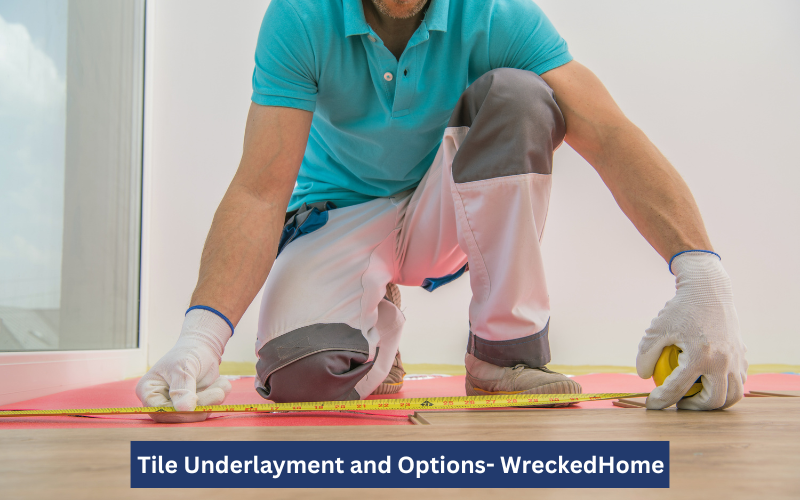
It comes in different sizes such as three-foot-by-five-foot or four-foot-by-eight-foot rigid panels. It has numerous types:
- Fiber-cement backer board
- Cement backer board
- Coated glass mat water-resistant gypsum backer board
- Fiber-reinforced water-resistant gypsum backer board
To lay it, you need to pour a thinset on the subfloor. On it, secure the panels of the backer board with screws. Over it, again pour a thinset. Then, set the tiles above it. This whole process is known as bedding. Thinset mortar is a powder that you mix with water. Then, apply it with a notched trowel over the slab or on the backer board. This will act as an adhesive and will keep your tiles in its place.
Here, you should give slaking time for thinset to develop its adhesive properties. In it, you need to mix the thinset and set it away for ten minutes. Then, re-mix it before using it. If you do not do it, it will not adhere to the tiles properly.
Mortar Beds
There are several pourable tile underlayment options that have their benefits and usage. The most famous one among them is the mortar. It is an older method which requires a lot of expertise and skills. But still, it is useful for those places that have high water exposure or uneven surfaces. In it, you need to take dry mortar and mix it with water to make a semi-solid consistency. Now pour it evenly on the slab to make a thick layer of it. After that, you need to install tiles above it.
Self-leveling Underlayments
Self-leveling underlayments also come in the category of pourable or liquid tile underlayment options. They are used on uneven slabs or wood subfloor. The self-leveling products come in a dry form. You need to mix them with water to a liquid consistency. Then, pour it evenly with the help of rollers or trowler.
Here, you need to see the product brand’s recommendations for accurate measurement of water. Also, use the mixer and smooth the product within the brand’s recommended time. We suggest you tape the cracks or holes in your subfloor before pouring the liquid. It prevents it from seeping into the holes to create uneven floors. Also, you should wait for it to get completely dry before installing tiles on it. It can take almost 24 hours or a few days, depending on the brand.
Membranes
It is a flexible and polyethylene underlayment tile option that comes in the form of different sheets. It is installed just like backer boards. They are used for water protection and soundproofing. It also has a crack isolation option which saves tile from the subfloor’s existing issues.
There are different types of membranes which you should know about:
- Liquid Membranes: This tile underlayment is ideal for washrooms or kitchens. They are waterproof or crack-prevention barriers. You can apply them with a brush or roller. RedGard is an example of it.
- Soundproofing Membrane: It reduces the floor-to-floor insulation sound.
- Uncoupling Membranes: This tile underlayment is made of plastic, and is waterproof or lightweight. They prevent tiles from cracking and damage to the tiles. DITRA is an example of it. They are used on concrete slabs or wood floors.
- Waterproofing Membranes: This tile underlayment is a DIY-friendly membrane and is cut off with a utility knife to fit it. They are mostly used in the concrete shower base. KERDI is an example of it.
- Peel and Stick Membrane: This is used for crack prevention. You need to use a primer to apply this tile underlayment.
Visit our store for 10% off our Tools here.
Foam Laminate Underlayment
It is the basic laminate flooring underlay. It is soundproof so it reduces noise coming from floor to floor. It is 3mm to 6mm thick and present in the form of rolls.
The foam has two types:
- Foam laminate underlay with moisture barrier
- Foam underlay without barrier
You can choose the foam with a barrier when using it in places where high humidity is present. It includes washrooms, basements, or kitchens.
Moreover, it has rubbers and fibers which provide durability and strength to this tile underlayment.
It is easy to install so homeowners with basic skills can do it. They are rolls so you just need to lay down and trim them with scissors or a utility knife. Its edges should be butted in place of overlapping it.
These are the types of tile underlayment that all of you should know. Now, we are going to discuss a few popular tile underlayment brands.
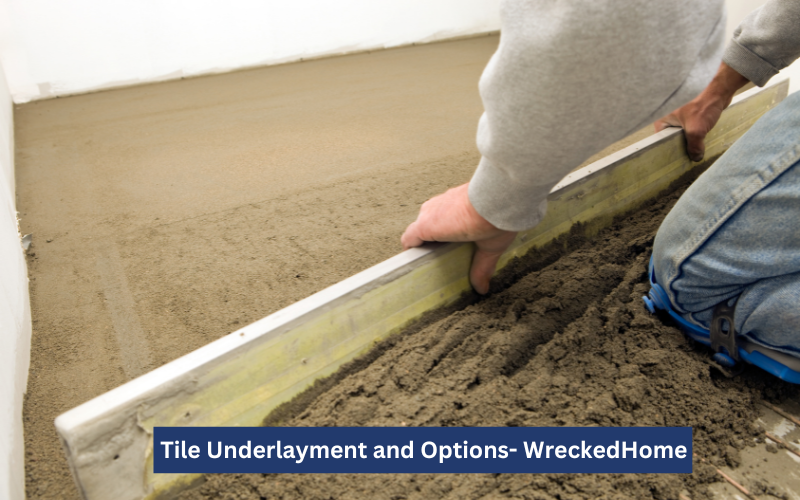
6 Famous Tile Underlayment Options
It is a top-rated cement-based backer board. You can use it as a tile underlayment for porcelain tiles, stone tiles, or ceramic tiles.
It is easy to cut and install so you don’t need an expert for this project. Moreover, it is strong so it will give a stable base to your floor.
It is water-resistant so you can use it in areas where moisture level is high. It means it is ideal for washrooms or kitchen areas.
It is another popular tile underlayment. It is manufactured by USG and it is also a cement-based backer board.
It has a high-performance core so it is ideal for dimensional stability and durability.
It resists mold and moisture keeping your place healthy and clean. You can use it for interior or exterior tile installations.
Moreover, you can use it on various places such as floors, walls, and countertops.
It is a waterproofing membrane of the Schulter System. It is not a tile underlayment in itself but can be used with others to provide extra protection for your tiles.
It is designed to resist moisture so you can use it in shower areas or steam rooms. It is flexible, lightweight, and easy to install.
It is also a famous coupling membrane which is made by Schluter Systems. You can use it as a tile underlayment for various types of floors including concrete or wood subfloors.
It is easy to install and lightweight. Moreover, it provides a strong bond between the substrate and the tile.
It reduces the risk of tile damage due to any movement or crack in the subfloor.
This uncoupling membrane is waterproof, lightweight, and easy to install. It is used on concrete, stone, or wood subfloor.
This tile underlayment is ideal for installing ceramic and stone tiles. It prevents cracks and stress of the subfloor from reaching your tile floor.
As it is waterproof, you can use it in washrooms, kitchens, steam rooms, basement flooring, and in shower areas.
It is a multipurpose uncoupling membrane that can be used on different types of floors. It is water resistant and can prevent every type of damage to tiles.
It is easy to install as you just have to cut the sheet and apply it in a horizontal or vertical place.
These six are top-rated tile underlayments on Amazon. People are buying and loving them so you all should give one of these options a chance.
For any repairs, installations, builds, or questions; We recommend you to hire a professional. Find A Pro Near You Here!

